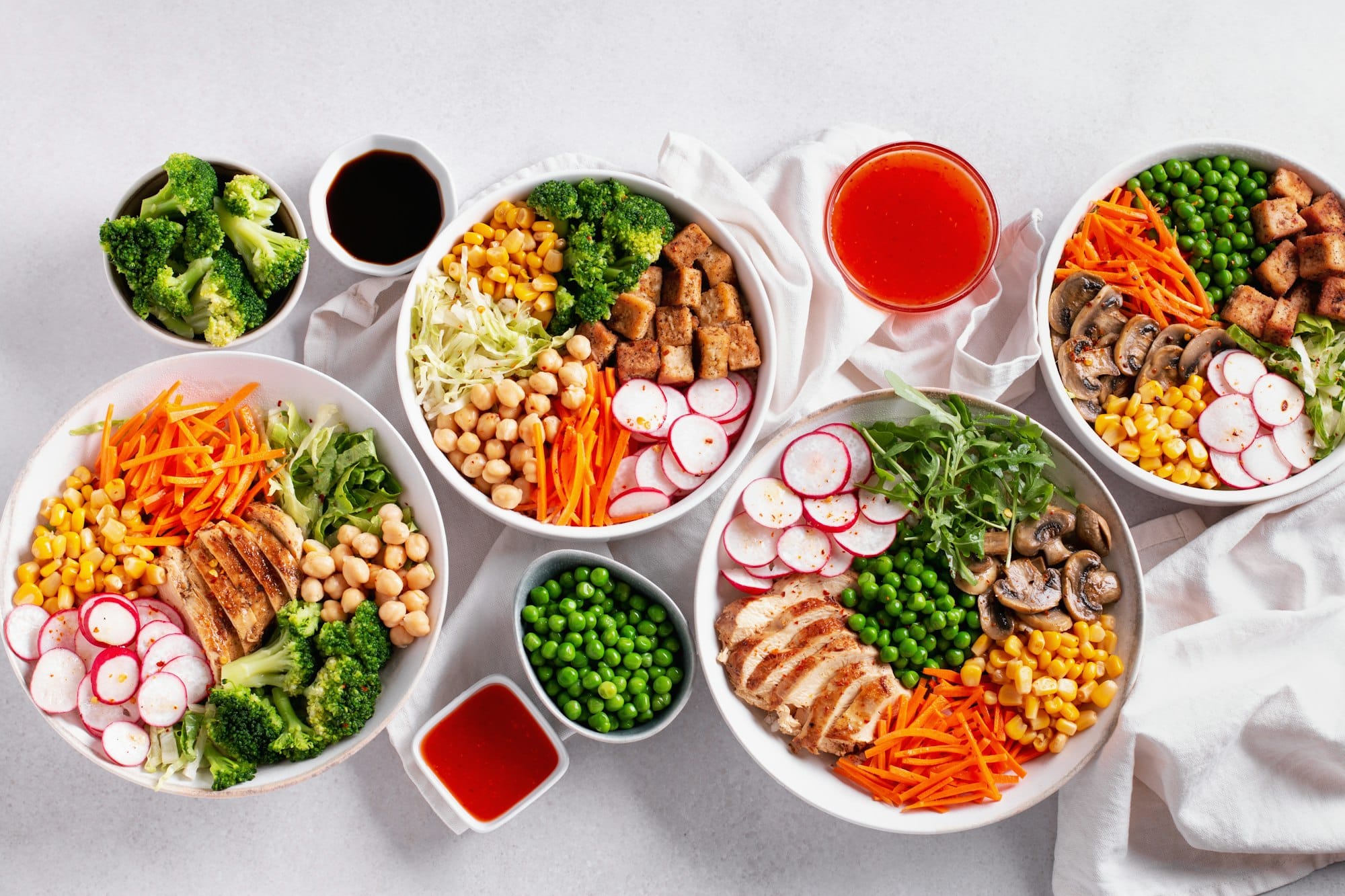How to Construct a Gourmet Vegan Buddha Bowl with a Tangy Tahini Dressing?

Buddha Bowls, with their wholesome ingredients and vibrant colors, have taken the culinary world by storm. These health-packed bowls, named after the round belly of Buddha himself, are a fantastic way to enjoy a balanced meal filled with a variety of flavors and textures. In this article, we will be diving into the art of creating a gourmet vegan Buddha Bowl, complete with a tangy tahini dressing that’s guaranteed to tantalize your taste buds.
Choosing the Right Ingredients for Your Vegan Buddha Bowl
When you start to build your Buddha Bowl, choosing the right components is crucial. A traditional Buddha Bowl features a mix of raw and cooked vegan ingredients, typically consisting of grains, proteins, vegetables, and a delicious sauce. However, the beauty of these bowls lies in their flexibility, allowing you to substitute or add ingredients according to your personal preference or dietary needs.
A lire aussi : How to Create an Authentic Neapolitan Pizza with a Perfectly Charred Crust at Home?
Begin with a grain base. Whole grains like quinoa and brown rice make excellent choices due to their high nutritional value. They also add a delightful texture and are quite filling. If you prefer, you can also use other grains such as farro, bulgur, or even couscous.
Your next layer should be protein. For a vegan Buddha Bowl, chickpeas are a popular choice. They are high in protein, incredibly versatile, and can be seasoned to match any flavor profile. Other vegan protein options include tofu, tempeh, lentils, and black beans.
A lire en complément : What’s the Secret to Baking a Perfectly Light and Airy Chiffon Cake?
Your Buddha Bowl also needs some vegetables. Rainbow carrots, sweet potatoes, roasted beets, and steamed broccoli are all wonderful options. You can also add some greens, like kale, spinach, or arugula, for an extra nutrient boost.
Finally, a good Buddha Bowl isn’t complete without a tantalizing dressing. More on that in a moment.
Prepping Your Ingredients
Once you’ve selected your ingredients, the next step is to prep them. Cooking times will vary, so it’s essential to plan accordingly. For instance, whole grains like quinoa or brown rice usually take around 30-40 minutes to cook.
When it comes to vegetables, roasting is a great option. It brings out the natural sweetness in vegetables like sweet potatoes, carrots, and beets. You can toss your chosen veggies in a small amount of olive oil, sprinkle with your favorite herbs and spices, and roast them in the oven for about 20-30 minutes.
Your protein, such as chickpeas, can be roasted along with the vegetables or cooked separately, depending on your preference. If you’re using canned chickpeas, be sure to drain and rinse them first. You can then toss them in a bit of oil and your chosen spices before roasting them for around 20 minutes.
Crafting the Tangy Tahini Dressing
A good Buddha Bowl is rounded off with a flavorful dressing. For our vegan Buddha Bowl, we’re going to make a tangy tahini dressing. Tahini, made from sesame seeds, has a creamy texture and a nutty flavor that pairs well with a variety of dishes. Combined with a few simple ingredients, it transforms into a delicious dressing that will elevate your Buddha Bowl to the next level.
To make the dressing, you’ll need 1/4 cup of tahini, 1/4 cup of water, 2 tablespoons of fresh lemon juice, 2 tablespoons of olive oil, and 2 tablespoons of maple syrup or agave nectar for a touch of sweetness. You can also add a clove of minced garlic, and salt and pepper to taste.
Combine all the ingredients in a bowl and whisk until smooth. If the dressing is too thick, gradually add more water until you reach your desired consistency.
Assembling Your Vegan Buddha Bowl
Now comes the fun part – assembling your Buddha Bowl. Start by adding a layer of your cooked grain to the bowl. Next, arrange your cooked vegetables and protein on top of the grains. Don’t be afraid to get creative with your presentation here; the beauty of a Buddha Bowl lies in its vibrant array of colors and textures.
Finally, drizzle your tangy tahini dressing over the top. The quantity of dressing you use will depend on your personal taste, but a few tablespoons should be enough to add a burst of flavor without overpowering the other ingredients.
Incorporating Variation into Your Buddha Bowl Recipes
While this recipe provides a basic guideline for creating a gourmet vegan Buddha Bowl, the possibilities are nearly endless. You can mix and match ingredients based on what’s in season, what’s on sale, or even what’s left over in your fridge.
For instance, you can replace quinoa with cauliflower rice for a low-carb option, or swap out chickpeas for tofu for a change in protein. You can also experiment with different sauces; try a peanut sauce, a spicy salsa, or a vegan pesto for a change of pace.
In the end, the perfect Buddha Bowl is one that makes your taste buds happy. So don’t be afraid to get creative, and most importantly, enjoy the process! That’s the true essence of a Buddha Bowl—wholesome, nourishing ingredients brought together with love and creativity to create a meal that’s as pleasing to the eye as it is to the palate.
Additional Tasty and Nutritious Ingredients for Your Buddha Bowl
Building upon the basics, there are numerous other ingredients you can include to add flavor, crunch, and nutrition to your vegan Buddha Bowl. One of these is butternut squash, a great source of vitamins, minerals and fiber. To incorporate it, simply peel, cube and roast it alongside your other vegetables.
Another great addition is brussels sprouts, roasted until they’re crispy on the outside and tender on the inside. They add a beautiful green hue to your bowl, not to mention a boost of vitamin C and K.
For those who love a touch of sweetness in their meals, dried fruits such as cranberries or raisins can add a delightful contrast to the savory components of your bowl. Seeds and nuts like sunflower seeds or almonds can lend a crunchy texture and additional protein to your bowl.
To add an extra dose of protein and fiber, consider including some edamame or green peas. These vibrant green additions not only boost the nutritional value of your Buddha Bowl, but they also add a pop of color that can make your bowl even more visually appealing.
Lastly, for a burst of freshness, consider including some fresh herbs. Cilantro, parsley, or mint all make for fantastic additions. You can chop them up and sprinkle them over your bowl, or incorporate them into your Tahini dressing for an extra layer of flavor.
Conclusion: Embrace the Art of Meal Prep with Your Vegan Buddha Bowl
Mastering the art of the Buddha Bowl not only results in a hearty and healthy meal, but it’s also perfect for meal prep. Bulk cooking your ingredients at the start of the week means you can quickly and easily assemble your Buddha Bowls for several days’ worth of meals. This is especially handy for those with busy schedules who still want to enjoy nutritious and delicious meals throughout the week.
To do this effectively, once all your ingredients are cooked, allow them to cool, then store each component separately in air-tight containers in the fridge. When you’re ready to assemble your Buddha Bowl, simply reheat the grains, proteins and roasted vegetables, then add your fresh ingredients and your Tahini dressing – voila! A gourmet, vegan meal in minutes.
Creating a Vegan Buddha Bowl is a fun and creative culinary adventure. It’s also an opportunity to embrace a plant-based lifestyle and experiment with different ingredients and flavors. Remember, there are no strict rules when it comes to Buddha Bowls – it’s all about using wholesome ingredients that you love and that make you feel nourished and satisfied.
So whether you’re a seasoned vegan, or just exploring more plant-based meals, Buddha Bowls are a versatile and delicious choice. Enjoy discovering your perfect blend of flavors in your very own custom Buddha Bowl.
